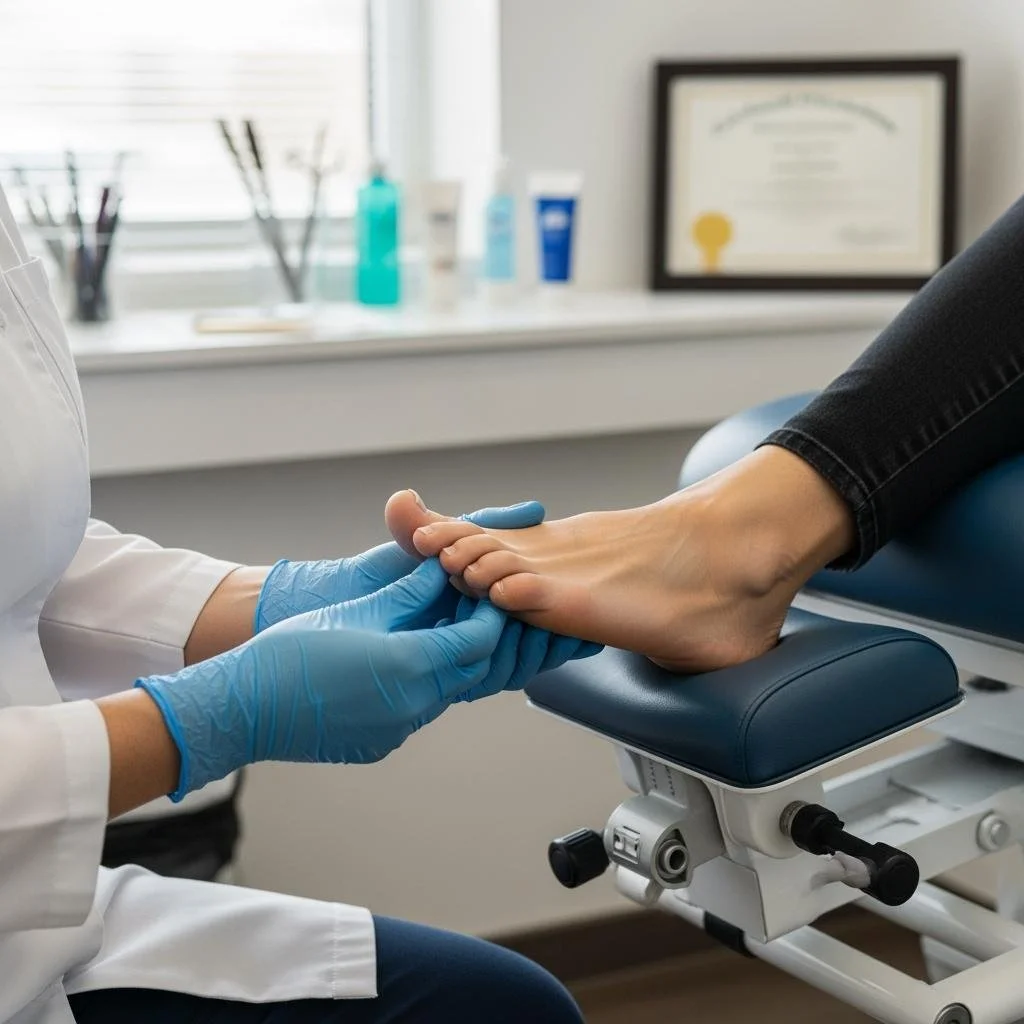Why Should I See A Podiatrist For Ongoing Foot Health?
We often take our feet for granted—until discomfort, pain, or itchiness reminds us just how essential they are to our daily lives. Many people overlook the importance of regular foot care, dismissing mild aches or skin irritations as insignificant. However, maintaining foot health is crucial not only for mobility but also for overall well-being.
A qualified podiatrist plays a vital role in identifying emerging issues, managing chronic conditions, and offering expert guidance on foot and ankle health. Whether you're dealing with persistent pain or simply want to stay proactive, seeing a podiatrist can make a significant difference.
In this article, we’ll explore why ongoing podiatric care is essential, what common foot problems to watch for, and how both professional and at-home care contribute to long-term foot health.
No. 1
Understanding Foot Health
Our feet are the unsung heroes of the body. They bear our weight, absorb shock with every step, and keep us balanced and mobile. Structurally, the feet are complex—comprising 26 bones, 33 joints, and over 100 muscles, tendons, and ligaments.
When functioning properly, they allow us to move freely and comfortably. However, the reality is that most people will encounter foot-related issues at some point in their lives. Conditions like flat feet, bunions, and heel pain are common, and while they may seem minor at first, they can escalate into serious complications if left untreated.
By seeking regular check-ups with a qualified podiatrist in Auckland, individuals can detect problems early, receive appropriate treatment, and prevent long-term damage.
No. 2
Common Foot Problems
Foot issues can significantly impact your comfort, mobility, and quality of life. Some of the most prevalent conditions include:
Plantar fasciitis: A painful inflammation of the tissue along the bottom of the foot, often causing sharp heel pain—especially in the morning.
Bunions: Bony bumps that form at the base of the big toe, leading to pain, swelling, and difficulty wearing shoes.
Corns and calluses: Thickened skin caused by pressure or friction; if untreated, they can become painful or infected.
Athletic injuries: Sprains, fractures, and tendonitis are common among active individuals and can disrupt fitness routines.
A skilled podiatrist can diagnose these conditions accurately and provide targeted treatments to relieve symptoms and prevent recurrence.
No. 3
Benefits of Seeing a Podiatrist
A podiatrist is a medical professional specializing in the diagnosis, treatment, and prevention of foot and ankle disorders. Their expertise ensures that patients receive comprehensive and personalized care.
Key Benefits Include:
Accurate diagnosis: Podiatrists use advanced tools and techniques to determine the root cause of foot pain and discomfort.
Preventative care: Regular visits allow for the early detection of changes in foot health, helping to prevent complications before they arise.
Customized treatment plans: Care is tailored to each individual’s lifestyle, age, and specific needs. This may include advice on footwear, orthotics, or physical therapy.
Surgical expertise: In severe cases, surgical intervention may be necessary. Podiatrists can recommend and perform appropriate procedures when needed.
Whether you're managing a chronic condition or simply want to maintain optimal foot health, a podiatrist provides the guidance and care necessary for lasting results.
New Balance
Step into unmatched comfort. New Balance brings style and support to every step you take.
No. 4
When to Consider a Podiatrist
While some foot discomfort can be managed at home, certain signs should prompt a visit to a podiatrist.
Seek professional help if you experience:
Persistent pain or swelling in the foot or ankle
Visible changes in foot shape, colour, or skin texture
Difficulty walking or bearing weight
Signs of infection, such as redness, warmth, or discharge
For individuals with diabetes, foot care is especially critical. Diabetes increases the risk of nerve damage and poor circulation, which can lead to serious complications if not monitored closely. Regular podiatric check-ups are essential in these cases.
Additionally, athletes and physically active individuals should consider routine screenings to prevent injuries and maintain peak performance. Early intervention can prevent minor issues from becoming long-term problems.
No. 5
Maintaining Foot Health at Home
While professional care is important, everyday habits also play a key role in preserving foot health. Simple, consistent practices can prevent many common issues.
At-home foot care tips include:
Daily washing and drying: Helps prevent fungal infections and keeps feet clean.
Moisturizing: Prevents dry, cracked skin, especially on the heels.
Proper nail care: Regular trimming and cleaning reduce the risk of ingrown toenails and infections.
Monitoring changes: Pay attention to any shifts in skin colour, temperature, or sensation.
No. 6
Wear the Right Footwear
Footwear plays a significant role in foot health. Shoes that are too tight, lack support, or have high heels can lead to deformities, pain, and long-term damage.
Choose shoes that offer:
Adequate arch support
Cushioning for shock absorption
A wide toe box to prevent crowding
Breathable materials for comfort
Avoid wearing the same pair of shoes every day, and replace worn-out footwear regularly. Investing in quality shoes is an investment in your long-term health.
Takeaways
Healthy feet are the foundation of an active, pain-free life. Ignoring foot discomfort can lead to more serious issues that affect your mobility and overall well-being. By visiting a podiatrist regularly, you gain access to expert care, early diagnosis, and personalized treatment plans that keep your feet in top condition.
From preventing common foot problems to managing chronic conditions, podiatric care is an essential part of overall health. Combined with good at-home practices and proper footwear, it enables you to stay mobile, independent, and comfortable at every stage of life.
Whether you're experiencing discomfort or simply want to stay proactive, prioritizing foot health is a step in the right direction.
Looking for Wellness resources?
Are you looking to enhance your wellness routine? Explore our wellness partners who offer a wide range of resources to support your journey toward holistic living and well-being.































